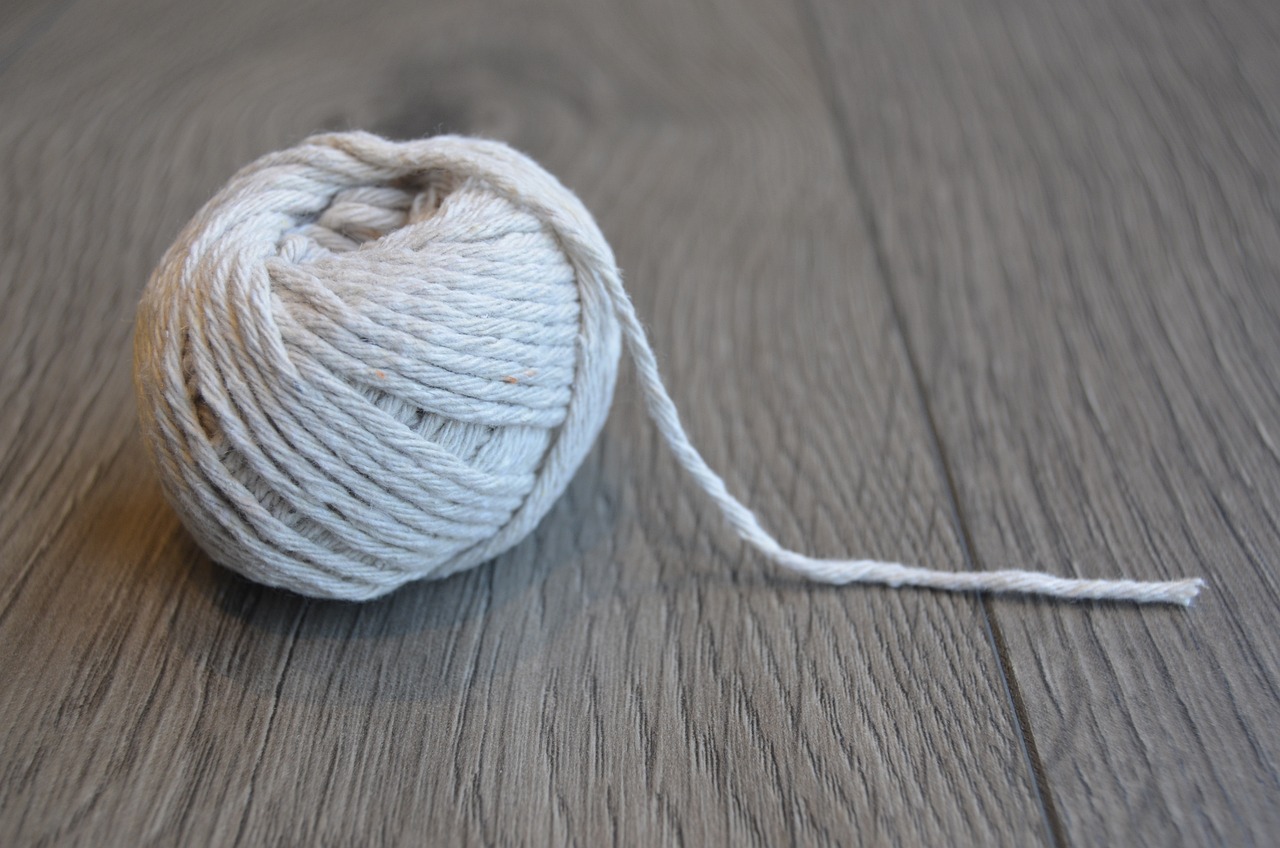Cheap & Cheerful: Budget-Friendly Crafts for Kids
In today’s fast-paced world, where expenses can pile up quicker than the laundry, finding ways to keep kids entertained without breaking the bank is essential. Luckily, crafting is a fantastic solution! It’s not just about keeping little hands busy; it’s about sparking imagination and creativity while having a blast. So, let’s dive into some budget-friendly craft ideas that are not only fun but also easy to do with materials you probably already have lying around your house.
Paper crafts are an excellent way for kids to express their creativity using materials readily available at home. From origami to paper mache, these projects are both fun and educational. Just think about it: a simple piece of paper can transform into a magnificent crane or a colorful mask! Not only do these activities encourage fine motor skills, but they also allow kids to learn about shapes, colors, and even storytelling. For example, you can create a storybook using folded paper, where each page tells a different part of an imaginative tale. The best part? You can use old magazines, newspapers, or even scrap paper, making it an eco-friendly option too!
Utilizing natural materials like leaves, stones, and twigs, nature-inspired crafts allow kids to connect with the environment. These projects promote creativity while teaching children about the world around them. Imagine going on a nature walk and collecting items to create beautiful art! Kids can make leaf rubbings, rock animals, or even a twig frame for their favorite family photo. It’s a fantastic way to combine outdoor fun with creativity. Plus, it opens up discussions about ecosystems and the importance of nature, making it a learning experience as well!
Transforming everyday waste into art can be a rewarding experience. By using recycled materials, kids learn the importance of sustainability while creating unique crafts that showcase their imagination. Think about all the plastic bottles and cardboard boxes that often end up in the trash. With a little creativity, they can become anything from a bird feeder to a robot! Encourage your children to think outside the box and see the potential in what others might consider waste. This not only fosters creativity but also instills a sense of responsibility towards the planet.
Kids can contribute to home decor with simple DIY projects. These crafts not only beautify living spaces but also instill a sense of pride and ownership in their creations. Whether it's a painted flower pot or a handmade wall hanging, when children see their work displayed at home, it boosts their confidence and creativity. Plus, it’s a great opportunity for parents to bond with their kids while working on something meaningful together. Imagine the joy on their faces when they see their art showcased in the living room!
Crafting based on seasons or holidays allows kids to celebrate and learn about different times of the year. These projects can be both fun and educational, enhancing their understanding of traditions. For instance, during Halloween, kids can create spooky decorations, while in the spring, they might make colorful flower crafts. This not only keeps them engaged but also helps them appreciate the beauty of changing seasons. You can even host a seasonal craft day where everyone creates something special to share!
Introducing kids to basic sewing can be a valuable skill. Simple sewing projects, like making pillows or fabric bookmarks, foster creativity while teaching patience and precision. Imagine your child stitching their very own pillow to cuddle with at bedtime! It’s not just about the end product; it’s about the process. They learn to follow instructions, use tools safely, and develop a sense of accomplishment when they see their finished work. Plus, sewing is a skill that can last a lifetime!
Painting is a timeless craft that encourages self-expression. With various techniques and mediums, kids can explore their artistic side while creating colorful masterpieces. Whether it’s finger painting for the littlest ones or experimenting with watercolors for the older kids, the possibilities are endless. Painting can be a wonderful way to express feelings or tell a story through art. Set up a painting station at home, complete with old shirts as smocks, and let their creativity flow!
Creating crafts for birthdays, holidays, or other celebrations adds a personal touch. Kids can make unique gifts or decorations, enhancing their appreciation for special moments and creativity. Imagine your child crafting handmade cards for family members or creating decorations for their birthday party. These projects not only teach them the joy of giving but also allow them to express their love and creativity in a heartfelt way. Every little creation becomes a cherished memory!
Q: What materials do I need for these crafts?
A: Most of the crafts can be done with common household items like paper, cardboard, scissors, glue, and natural materials like leaves and twigs.
Q: Are these crafts suitable for all ages?
A: Yes! Many of these crafts can be adapted for different age groups, from toddlers to older kids, ensuring everyone can participate.
Q: How can I encourage my child’s creativity?
A: Provide them with a variety of materials, give them freedom to create, and celebrate their efforts, no matter the outcome!

Creative Paper Crafts
When it comes to unleashing creativity, paper crafts are like a blank canvas waiting for young artists to dive in. They are not only affordable but also incredibly versatile, making them a fantastic choice for kids of all ages. Imagine transforming a simple sheet of paper into a beautiful origami crane or a vibrant paper mache mask. The possibilities are endless! Plus, these crafts can be done using materials you probably already have lying around the house, which makes them even more appealing.
One of the most exciting aspects of paper crafts is how they can enhance fine motor skills and cognitive development. As children fold, cut, and glue, they are honing their hand-eye coordination and problem-solving abilities. For instance, when kids tackle an origami project, they must follow intricate steps, which can be a fun challenge. It’s like a puzzle that rewards them with a stunning creation at the end!
Here are a few engaging paper craft ideas to spark your child’s imagination:
- Origami Animals: Teach your kids the art of origami. With just a few folds, they can create anything from frogs to butterflies. There are countless online tutorials available to guide them through the process.
- Paper Mache: This classic craft allows kids to make sculptures using strips of paper and a glue mixture. They can create anything from bowls to masks, and the best part is they can paint their creations once they dry!
- Paper Collages: Gather old magazines, newspapers, and colored paper. Kids can cut out images and shapes to create unique collages that tell a story or represent their favorite themes.
Each of these projects not only provides a creative outlet but also encourages children to think outside the box. For example, while making a paper mache project, they might decide to add glitter or paint, making it truly their own. This sense of ownership boosts their confidence and fosters a love for crafting.
Additionally, paper crafts can be a wonderful way to bond with your kids. Set aside some time for a crafting session, where everyone can participate. You could even turn it into a friendly competition, like who can create the most intricate origami or the most imaginative collage. The laughter and joy shared during these moments are priceless, and the memories created will last a lifetime.
In summary, are an excellent way for kids to express themselves while developing essential skills. They encourage imagination, problem-solving, and fine motor abilities, all while keeping costs low. So, gather some paper, scissors, and glue, and watch your child's creativity soar!
Q: What materials do I need for paper crafts?
A: Most paper crafts require basic materials such as paper, scissors, glue, and sometimes paint or markers. You can also use recycled materials like old newspapers or magazines.
Q: Are paper crafts suitable for all ages?
A: Yes! There are paper craft projects suitable for toddlers, school-aged children, and even teens. Just choose projects that match their skill level.
Q: How can I encourage my child to be more creative with paper crafts?
A: Provide them with a variety of materials and let them explore freely. Avoid strict guidelines; instead, encourage them to make their own choices and express their ideas.

Nature-Inspired Crafts
Utilizing natural materials like leaves, stones, and twigs, provide an incredible opportunity for kids to connect with the environment while unleashing their creativity. Imagine your little ones stepping outside, gathering treasures from the garden or park, and transforming those simple items into stunning works of art! This hands-on experience not only promotes creativity but also instills a sense of appreciation for the beauty of nature.
One of the simplest yet most captivating projects is creating a leaf collage. Kids can collect various leaves of different shapes, sizes, and colors, then arrange them on a piece of cardstock or canvas. With a little glue, they can create a beautiful representation of the changing seasons. This project is not just fun; it also teaches them about the different types of foliage and the importance of trees in our ecosystem.
Another exciting project is making nature sculptures. Using twigs, stones, and even pinecones, children can craft unique sculptures that reflect their imagination. For instance, they might use twigs to form the body of an animal and stones for its head. This activity encourages kids to think outside the box and use their surroundings as inspiration. Plus, it's a fantastic way to get them moving outdoors!
To take it a step further, consider organizing a nature scavenger hunt where kids can find specific items like acorns, feathers, or interesting rocks. After collecting their treasures, they can use these items to create various crafts. For example, acorns can be transformed into adorable little creatures with just a bit of paint and imagination. This not only makes crafting fun but also educational, as kids learn to identify different natural elements.
Additionally, you can incorporate educational components into these crafts. For example, while crafting with stones, discuss the different types of rocks and their formations. Or, when working with leaves, explore the concept of photosynthesis and why leaves change color in the fall. This blend of crafting and learning creates a rich experience that your children will cherish.
In conclusion, nature-inspired crafts are not only a fantastic way for kids to express themselves artistically, but they also foster a deeper connection with the great outdoors. So, the next time you're looking for a budget-friendly and engaging activity, grab some natural materials and let the creativity flow!
Q: What materials do I need for nature-inspired crafts?
A: You can use a variety of natural materials such as leaves, twigs, stones, flowers, and even pinecones. You may also need basic crafting supplies like glue, scissors, and paper or canvas.
Q: Are nature crafts suitable for all age groups?
A: Absolutely! While younger children may need assistance, nature crafts can be adapted for all ages. Older kids can take on more complex projects, while younger ones can enjoy simpler activities.
Q: How can I ensure the crafts are safe for my children?
A: Always supervise your children during crafting sessions, especially when using scissors or other tools. Make sure to check that the natural materials they collect are safe and non-toxic.
Q: Can these crafts be done indoors?
A: Yes, while many nature-inspired crafts are best enjoyed outdoors, you can bring the collected materials inside to create beautiful art projects. Just ensure the materials are clean and dry before using them indoors.

Recycled Materials Projects
When it comes to unleashing creativity, there’s nothing quite like . Imagine transforming an old cereal box into a stunning piece of art or turning plastic bottles into whimsical planters. Not only are these projects budget-friendly, but they also teach kids about the importance of sustainability and the impact of waste on our planet. With just a little imagination and some common household items, the possibilities are endless!
One of the best things about using recycled materials is that it encourages kids to think outside the box. Instead of viewing trash as waste, they learn to see it as a canvas for their next masterpiece. For instance, a simple toilet paper roll can become a charming owl with just a few snips and some paint. This not only sparks creativity but also fosters problem-solving skills as children figure out how to transform everyday items into something beautiful and functional.
Here are some engaging recycled materials projects that are perfect for kids:
- Cardboard Creations: Use old boxes to construct imaginative structures like castles, robots, or even life-sized playhouses.
- Plastic Bottle Planters: Cut and decorate plastic bottles to create unique planters for herbs or flowers. This project also teaches kids about gardening and caring for plants.
- Egg Carton Animals: Get crafty with egg cartons by cutting them into shapes to create fun animals or critters. Add googly eyes and paint for extra flair!
- Magazine Collages: Gather old magazines and let kids cut out pictures and words to create vibrant collages that express their thoughts and feelings.
These projects not only provide a fun way for kids to express themselves but also instill a sense of responsibility towards the environment. They learn that their actions can contribute to a more sustainable world, and that’s a lesson that goes beyond crafting. Plus, it’s a fantastic way to spend quality time together as a family, bonding over creativity and innovation.
As we dive into the world of recycled crafts, it’s essential to remember that there are no strict rules. Encourage kids to experiment with different materials and techniques. Who knows? That old shoebox might just become the next big thing in their imaginative world! The joy of creating something out of nothing is not only rewarding but also a fantastic confidence booster for young minds.
So, gather those recyclable materials and let the crafting adventure begin! With a little creativity and a lot of heart, kids can turn trash into treasure, all while having a blast. The next time you’re about to throw something away, pause and ask yourself: Could this be transformed into something wonderful? The answer is likely a resounding yes!
Q: What types of materials can I use for recycled crafts?
A: You can use a wide variety of materials such as cardboard boxes, plastic bottles, old newspapers, egg cartons, and even fabric scraps. The key is to think creatively about what you have on hand!
Q: Are recycled crafts safe for children?
A: Absolutely! Just ensure that any materials used are clean and free from sharp edges. Always supervise younger children during crafting sessions to ensure safety.
Q: How can I encourage my child to be creative with recycled materials?
A: Give them the freedom to explore! Provide a selection of materials and let them brainstorm ideas. Ask open-ended questions to inspire their creativity, such as “What else could we make with this?”
Q: Can recycled crafts be educational?
A: Yes! Many recycled crafts can incorporate lessons about sustainability, recycling, and environmental responsibility. They can also enhance fine motor skills and creativity.

DIY Home Decor
When it comes to , kids can unleash their creativity and add a personal touch to their living spaces. Imagine a room filled with vibrant colors and unique decorations made by little hands! Not only is this a fun way to spend time together, but it also fosters a sense of pride in their creations. Plus, who doesn't love a home that reflects the personality of its inhabitants?
There are countless projects you can embark on, using materials you likely already have around the house. For instance, you can transform ordinary mason jars into stunning candle holders. Just grab some paints, brushes, and a few embellishments like ribbons or beads. Kids can paint the jars in their favorite colors, and once dried, you can place tealight candles inside for a warm glow. It’s an easy way to create ambiance while teaching kids about upcycling.
Another fantastic idea is to create a family photo collage. Gather old magazines, scrap paper, or even fabric scraps to make a vibrant backdrop. Kids can cut out their favorite pictures and arrange them in a fun way on a canvas or poster board. This not only enhances their fine motor skills but also gives them the chance to express what family means to them. The end result is a beautiful piece of art that tells a story!
Additionally, you can make your own decorative pillows using simple sewing techniques. Start with some fabric scraps and let the kids choose their favorite patterns. They can help cut the fabric, sew the edges, and stuff the pillows. Not only will they learn a valuable skill, but they will also have custom pillows that reflect their style. Imagine snuggling up with a pillow made by your child while watching a movie!
For those who love nature, consider creating wall art using leaves, flowers, or twigs. Kids can collect these items during a nature walk and then arrange them on a canvas or in a shadow box. This not only beautifies the home but also teaches children about the beauty of nature and the importance of preserving it. Plus, it’s a great way to spark conversations about the environment!
As you dive into these projects, remember that the goal is to have fun and enjoy the process. Encourage your kids to think outside the box and experiment with colors and shapes. The beauty of DIY home decor is that there are no strict rules—just creativity and imagination. So roll up your sleeves, gather your supplies, and get ready for some delightful crafting sessions!
Q: What materials do we need for DIY home decor projects?
A: You can use a variety of materials, including paper, fabric, paint, and natural items like leaves and stones. Household items such as jars and boxes can also be transformed into beautiful decor.
Q: How can I involve my kids in the crafting process?
A: Encourage your kids to choose their projects and materials. Let them express their ideas and take the lead in creating their decor. This fosters independence and creativity!
Q: Are these projects suitable for all ages?
A: Yes! Most DIY home decor projects can be adapted for different age groups. Younger children may need more supervision, while older kids can handle more complex tasks.
Q: How do we display the finished crafts?
A: You can hang wall art, place decorative pillows on couches, or use handmade items as centerpieces on tables. Get creative with how you showcase your child's work!

Seasonal Crafts
Crafting based on the seasons or holidays is not just a fun activity; it’s a fantastic way for kids to learn about the world around them while celebrating different times of the year. Imagine the joy on a child's face when they create a beautiful autumn leaf wreath or a sparkling snowflake decoration! These projects can be both enjoyable and educational, enhancing their understanding of traditions and the changing seasons.
For instance, during the fall, kids can gather colorful leaves and use them to make stunning collages or leaf prints. This not only allows them to express their creativity but also teaches them about the beauty of nature. Similarly, in winter, crafting with white paper to create snowflakes or using cotton balls to make fluffy snowmen can spark their imagination and bring the winter wonderland indoors.
Spring is another delightful season for crafting. Kids can make flower crowns or paint pots to plant seeds, which introduces them to gardening and the life cycle of plants. Summer, on the other hand, is perfect for creating colorful beach-themed crafts, such as seashell collages or sand art, which can remind them of sunny days spent by the ocean.
To give you a clearer idea, here’s a simple table summarizing some seasonal craft ideas:
| Season | Craft Idea | Materials Needed |
|---|---|---|
| Fall | Leaf Collage | Leaves, glue, paper |
| Winter | Paper Snowflakes | White paper, scissors |
| Spring | Flower Crown | Flowers, wire, tape |
| Summer | Seashell Collage | Seashells, glue, canvas |
These seasonal crafts not only beautify your home but also create lasting memories. Kids learn the significance of each season and holiday, making the crafting experience more meaningful. So, gather your supplies and let the creativity flow! Who knows, you might just create a new family tradition that everyone looks forward to each year.
Q: What age group is suitable for seasonal crafts?
A: Seasonal crafts can be tailored for various age groups. Younger children may need more guidance, while older kids can work independently or in small groups.
Q: How can I make these crafts more educational?
A: Incorporate lessons about the seasons, nature, or cultural traditions associated with each holiday while crafting. This can make the activity both fun and informative!
Q: What materials do I need to get started?
A: Most seasonal crafts can be made using common household items like paper, glue, scissors, and natural materials. Always check your supply stash before heading out to buy new materials!

Simple Sewing Projects
Sewing might seem like a daunting task, but it can be an incredibly rewarding and fun activity for kids! With just a few basic skills, children can create delightful projects that not only spark their creativity but also teach them valuable lessons in patience and precision. Imagine the joy on their faces as they stitch together their very own creations! Simple sewing projects can be a gateway to a world of imagination and craftsmanship.
One of the best things about sewing is that it can be done with minimal supplies. A basic sewing kit typically includes some fabric, a needle, thread, and scissors. You don’t need to break the bank to get started; in fact, many of the materials can be found around the house. Old clothes, scraps of fabric, or even pillowcases can be repurposed into fabulous new items. This not only makes sewing budget-friendly but also encourages kids to think creatively about recycling materials.
Here are a few simple sewing projects that kids can tackle:
- Fabric Bookmarks: These are super easy to make! Kids can cut out fun shapes from fabric scraps, sew around the edges, and even embellish them with buttons or fabric paint. They’ll love using their unique bookmarks to keep their place in their favorite books.
- Pillows: A small pillow can be a great first project. Kids can choose their favorite fabric, cut it into squares, and sew the edges together, leaving a small opening to stuff it. Once stuffed, they can sew it closed and have a cozy pillow to decorate their room!
- Simple Tote Bags: With just a bit of sewing, kids can create their own tote bags! They can choose colorful fabrics, cut out rectangles, and sew the sides together. Adding handles can be as simple as sewing on strips of fabric or using old belts. These bags can be used for carrying books, toys, or even as a gift bag for friends.
Each of these projects not only helps kids develop their sewing skills but also boosts their confidence as they see their creations come to life. Plus, sewing can be a fantastic bonding experience. Parents and children can sit together, share stories, and enjoy the process of crafting something special.
To further enhance the sewing experience, consider creating a simple sewing station at home. A small table with all the necessary supplies organized can make the process smoother and more enjoyable. You can even introduce kids to basic sewing techniques like running stitches, backstitching, and even simple embroidery. These skills can serve as the foundation for more complex projects down the line.
In conclusion, simple sewing projects are not just about creating items; they are about nurturing creativity, building confidence, and fostering a love for crafting. So why not gather some supplies and dive into the wonderful world of sewing together? It’s a fun, educational, and budget-friendly way to spend time and create lasting memories!
Q: What age is appropriate for kids to start sewing?
A: Children as young as 5 or 6 can start with basic hand sewing projects, while older kids can handle more complex tasks with a sewing machine.
Q: Do I need a sewing machine for these projects?
A: No, many simple projects can be done by hand. However, if you have a sewing machine, it can speed up the process and open up more project possibilities.
Q: What materials do I need to get started?
A: Basic materials include fabric, needles, thread, scissors, and pins. You can also use embellishments like buttons or fabric paint for added creativity.
Q: How can I make sewing more fun for my kids?
A: Encourage them to choose their own fabrics, personalize their projects, and even create themed items based on their interests. Make it a fun family activity by sewing together!

Fun with Paint
Painting is not just a pastime; it's a gateway to creativity that opens up a world of possibilities for kids. Imagine a blank canvas, just waiting to be transformed into a vibrant masterpiece! Whether your child is a budding Picasso or just enjoys splattering colors, painting provides a unique opportunity for self-expression and imagination. With a few simple supplies, you can turn an ordinary day into an extraordinary adventure filled with colors, textures, and fun!
One of the most exciting aspects of painting is the variety of techniques that can be explored. From traditional brush strokes to finger painting, the options are endless. Kids can experiment with different mediums, such as watercolors, acrylics, or even homemade paints made from kitchen ingredients like flour and food coloring. This not only makes the activity affordable but also adds an element of surprise as they discover how colors blend and change.
To get started, gather some basic supplies. Here’s a simple list of materials you might need:
- Paint (watercolors, acrylics, or homemade)
- Brushes of various sizes
- Canvas, paper, or cardboard
- Water and containers for rinsing brushes
- Old newspapers or a plastic tablecloth to protect surfaces
Once you have your supplies, the real fun begins! Encourage your kids to let their imaginations run wild. They can paint landscapes, abstract designs, or even their favorite characters. It's fascinating to see how each child's unique perspective shines through in their artwork. You might even consider setting up a mini-exhibition at home to showcase their creations, giving them a sense of pride in their work.
Another exciting way to engage with painting is through themed projects. For example, you could have a nature day where kids paint rocks, leaves, or flowers collected from the backyard. Or, during the holiday season, they can create festive decorations by painting ornaments or making personalized greeting cards. These activities not only enhance their artistic skills but also help them connect with the world around them.
As with any craft, it's important to remember that the process is more valuable than the end result. Encourage your kids to embrace mistakes as part of their learning journey. Every splash of paint and every unexpected drip can lead to a new idea or technique. This mindset fosters resilience and creativity, essential skills that extend beyond the canvas.
In conclusion, painting is a delightful and enriching activity that can be enjoyed by kids of all ages. It not only allows them to express themselves but also helps develop fine motor skills, color recognition, and a sense of accomplishment. So grab those brushes and let the colors flow; who knows what amazing creations await!
Q: What type of paint is best for kids?
A: Watercolors are great for younger children as they are easy to clean up and less messy. Acrylics are suitable for older kids who want to explore more vibrant colors and textures.
Q: How can I make homemade paint?
A: You can easily make homemade paint using flour, water, and food coloring. Mix 1 cup of flour with 1 cup of water and add food coloring to achieve desired hues.
Q: What should I do if my child is frustrated with their painting?
A: Encourage them to take a break and remind them that art is about exploration and fun. Offer positive reinforcement and suggest they try something different if they feel stuck.

Crafts for Special Occasions
Creating crafts for special occasions is not just about making something pretty; it's about adding a personal touch that can make any event memorable. Whether it’s a birthday party, a holiday celebration, or a family gathering, kids can dive into the world of creativity and produce unique items that reflect their personality and feelings. Imagine the joy on a friend's face when they receive a handmade birthday card adorned with colorful drawings and heartfelt messages. It’s these little things that make moments truly special!
One of the best things about crafting for occasions is the variety of materials and techniques that can be used. For example, kids can use items like colored paper, markers, glitter, and even fabric scraps to create stunning decorations or gifts. The process not only boosts their creativity but also teaches them about the significance of the event they are celebrating. They learn to appreciate the traditions associated with birthdays, holidays, and other special days.
Let’s take a closer look at some fun craft ideas for various occasions:
- Birthday Cards: Kids can create personalized cards using cardstock, stickers, and drawings. Encourage them to write a special message inside to make it even more meaningful.
- Holiday Decorations: For holidays like Christmas or Halloween, kids can make ornaments or spooky decorations using paper, paint, and other craft supplies. These crafts can be hung around the house, creating a festive atmosphere.
- Gift Wrapping: Instead of buying wrapping paper, why not let kids decorate plain brown paper with stamps or drawings? This adds a unique flair to any gift!
- Party Hats: Making party hats from colorful paper and embellishing them with glitter and stickers can be a fun activity for kids to engage in during a birthday celebration.
Moreover, these crafts can serve as great conversation starters during gatherings. Imagine guests admiring the handmade centerpieces or decorations created by the kids! It gives children a sense of pride and accomplishment, knowing their efforts are appreciated by family and friends. Plus, it’s a fantastic way to bond with loved ones as everyone gets involved in the crafting process.
In addition to enhancing the event's atmosphere, these crafts can also be used as educational tools. For instance, while making decorations, kids can learn about the history and significance of the occasion. This not only enriches their understanding but also instills a sense of cultural appreciation.
So, whether it’s crafting a unique gift for a friend or creating decorations for a family gathering, the possibilities are endless. The joy of crafting not only lies in the end product but also in the memories made along the way. Encourage your kids to let their imaginations run wild, and watch as they create beautiful pieces that celebrate life’s special moments!
Q: What materials do I need for crafting with kids?
A: Common household items such as paper, scissors, glue, markers, and recycled materials can be great for crafting. You can also use items like fabric scraps, buttons, and natural materials found outside.
Q: How can I encourage my child to be creative while crafting?
A: Allow them the freedom to express themselves without strict guidelines. Provide a variety of materials and let them explore different techniques. Praise their efforts regardless of the outcome!
Q: Are there any safety tips for crafting with young children?
A: Always supervise young children, especially when using scissors or glue. Choose age-appropriate materials and tools, and teach them about using supplies safely.
Q: Can crafting be educational?
A: Absolutely! Crafting can teach children about colors, shapes, and even cultural traditions associated with different occasions. It also enhances fine motor skills and encourages problem-solving.
Frequently Asked Questions
- What materials do I need for budget-friendly crafts?
Most budget-friendly crafts can be made using common household items. Think about things like paper, cardboard, scissors, glue, and natural materials like leaves or stones. You'd be surprised at how creative you can get with what you already have!
- Are these crafts safe for young children?
Absolutely! Many of the crafts suggested are safe for kids, especially when adult supervision is involved. Just ensure that you choose age-appropriate projects and materials. Always keep scissors and small items out of reach of very young children.
- How can I encourage my kids to be more creative with their crafts?
Encouraging creativity can be as simple as giving them the freedom to explore different materials. Ask open-ended questions like, "What do you think will happen if we mix these colors?" or "How would you like to decorate this?" Give them space to express themselves!
- What are some easy crafts for kids who are new to crafting?
Start with simple projects like paper collages, painting rocks, or making friendship bracelets. These activities are fun and easy to follow, making them perfect for beginners. Plus, they can be done with minimal supervision!
- Can crafting help with my child's development?
Definitely! Crafting can enhance fine motor skills, boost creativity, and improve problem-solving abilities. It also provides an excellent opportunity for kids to express their feelings and ideas, making it a fantastic developmental tool.
- How do I clean up after crafting sessions?
Cleaning up can be part of the fun! Encourage your kids to help by making it a game. Use a designated craft area to contain messes, and have trash and recycling bins nearby. A quick wipe down of surfaces will keep everything tidy and ready for the next creative session!
- What are some seasonal crafts I can do with my kids?
Seasonal crafts can include making paper snowflakes in winter, flower crowns in spring, or spooky decorations for Halloween. These projects not only celebrate the seasons but also teach kids about various holidays and traditions!
- Is crafting a good way to spend time together as a family?
Absolutely! Crafting is a fantastic way to bond. It opens up conversations, allows for teamwork, and creates lasting memories. Plus, you get to admire each other's creations at the end!


















